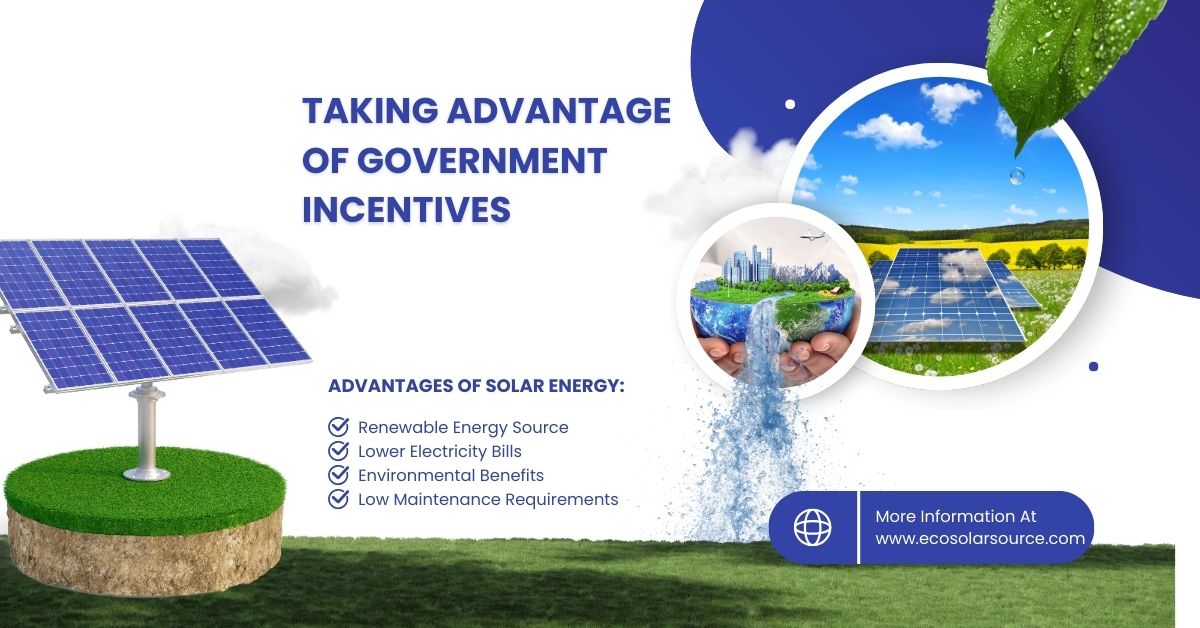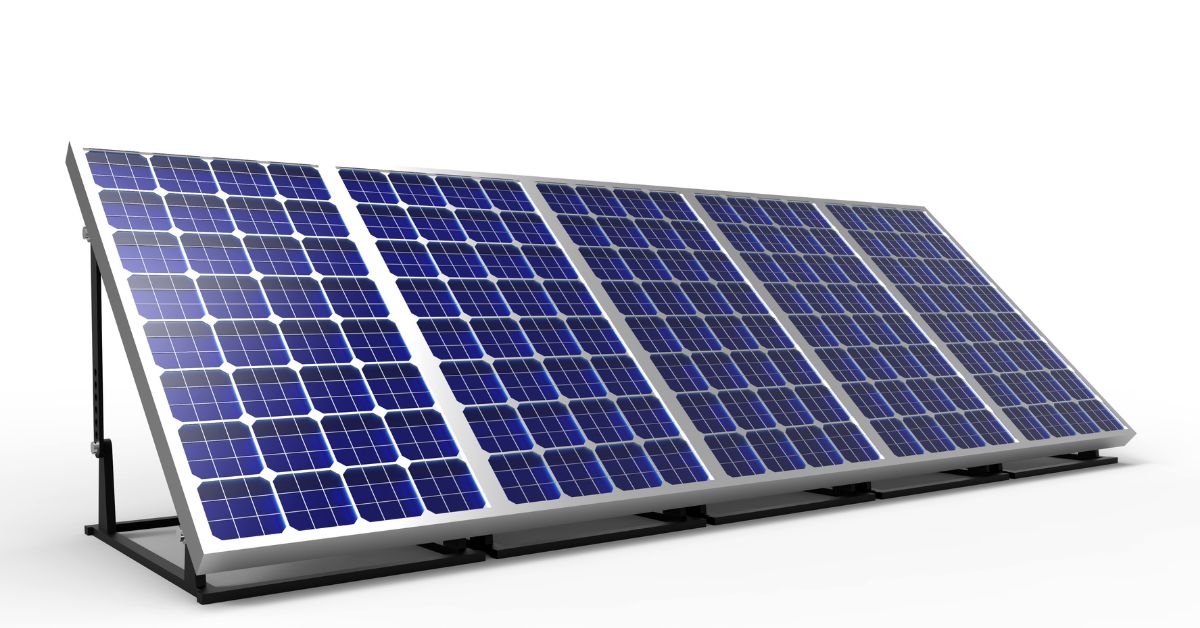Financial Benefits of Installing Solar Panels in Schools
Know the details about the Financial Benefits of Installing Solar Panels in Schools, Installing solar panels in schools offers significant financial benefits. By generating renewable energy on-site, schools can reduce electricity bills, redirecting those savings toward educational resources. Solar panels also provide long-term cost stability by protecting schools from rising energy prices.
Additionally, many governments offer tax incentives, rebates, and grants for solar projects, further lowering installation costs. Schools can also sell excess energy back to the grid, generating extra revenue. Over time, the investment pays off, with maintenance costs being minimal. Ultimately, solar energy enables schools to operate more sustainably while freeing up funds for improving student experiences and academic programs.
Table of Contents
Financial Benefits of Installing Solar Panels in Schools
As the world continues to embrace renewable energy, one sector that can significantly benefit from this shift is education, particularly in primary and secondary schools. Installing solar panels on school buildings is not only an environmentally conscious decision but also a financially astute one. With growing concerns about climate change and rising electricity costs, schools are looking for sustainable ways to reduce their operating expenses while contributing to a greener future. This comprehensive guide will explore the numerous financial benefits of installing solar panels in schools, emphasizing short-term savings, long-term financial gains, and broader economic impacts.
Reducing Energy Costs
One of the most immediate financial benefits of installing solar panels in schools is the significant reduction in energy costs. Schools typically operate during daylight hours, which coincides with peak solar production. Solar panels can capture and convert sunlight into electricity, reducing the need for grid-supplied electricity. Given the large size of most school campuses, the potential for generating substantial amounts of solar power is high.
a. Offsetting Electricity Bills
The most direct financial impact comes from offsetting electricity bills. In many regions, schools spend a significant portion of their budget on energy, especially in climates where heating and air conditioning are used extensively. Solar panels can reduce the reliance on external electricity providers, allowing schools to generate their clean energy. Over time, these savings can accumulate, allowing schools to allocate resources to other pressing needs such as curriculum development, teacher salaries, and student programs.
b. Avoiding Rising Energy Costs
Energy prices are notoriously volatile and have been steadily rising over the past decades. Installing solar panels offers schools a hedge against future energy cost increases. By producing their own energy, schools are less dependent on utility companies and less exposed to fluctuations in energy prices. Over the typical lifespan of solar panels, which can range from 25 to 30 years, this protection from rising costs translates into substantial financial savings.
Taking Advantage of Government Incentives
In many countries, governments offer incentives and subsidies for institutions and organizations that adopt renewable energy solutions. Schools are prime candidates for taking advantage of these financial incentives, which can drastically reduce the upfront costs of installing solar panels.

a. Tax Credits and Rebates
Many governments, particularly in the U.S., offer tax credits and rebates to organizations that install solar panels. The Federal Solar Investment Tax Credit (ITC), for instance, provides a credit for up to 30% of the cost of installing a solar photovoltaic (PV) system. While tax credits primarily benefit private institutions, public schools can still benefit indirectly through Power Purchase Agreements (PPAs) or solar leases, where third-party investors can claim the tax credits and pass the savings on to the schools through reduced energy costs.
b. Grants and Funding Programs
Apart from tax incentives, schools can apply for various grants and funding programs specifically designed to promote renewable energy in the education sector. In the U.S., for instance, the Department of Energy and other state agencies often provide grants for solar energy projects in schools. These grants can cover a significant portion of installation costs, making the transition to solar energy more affordable.
c. Net Metering
Net metering is another financial mechanism that can benefit schools with solar panels. Through net metering programs, schools can sell excess energy back to the grid when their solar panels produce more electricity than they consume. This allows schools to earn credits on their energy bills, further reducing operating costs. In some cases, schools can even generate surplus income if their solar systems are large enough to consistently produce excess power.
Long-Term Financial Benefits and ROI
Solar panels are a long-term investment with substantial financial returns. Though the upfront cost of installation can be high, the long-term savings far outweigh the initial expenditure. The return on investment (ROI) for solar panels in schools typically becomes evident within a few years, with some schools achieving payback periods as short as five to ten years.
a. Durability and Low Maintenance Costs
Solar panels are remarkably durable, often lasting 25 to 30 years or more with minimal maintenance. Once installed, the maintenance costs are generally low, primarily involving periodic cleaning and minor repairs. Many manufacturers offer long warranties on both the panels and the inverters, ensuring that the system operates efficiently for decades. This means that after the initial payback period, schools can continue to reap financial benefits for many years with little ongoing investment.
b. Increasing Property Value
Solar panel installations can increase the property value of school buildings. While schools are not typically sold as commercial buildings, their valuation can rise in cases where districts seek to consolidate or reallocate resources. An energy-efficient, solar-powered school is likely to have a higher property value than one that relies on traditional energy sources, making it an attractive asset in the long term.
c. Attracting Additional Funding
Installing solar panels can also help schools attract additional funding and donations. Donors, especially those interested in environmental causes, may be more inclined to contribute to schools that prioritize sustainability. Green initiatives can also make schools eligible for new types of grants and endowments from both government and private organizations that are focused on environmental education and sustainable development.
Educational Opportunities and Community Engagement
Beyond the direct financial benefits, installing solar panels can serve as an educational tool and a means of engaging the community. Many schools that invest in solar energy integrate renewable energy into their curriculum, teaching students about sustainability, energy conservation, and climate change. This educational component can lead to additional financial and reputational benefits.

a. Sustainability Curriculum and Student Engagement
By incorporating solar panels into the school environment, teachers can create hands-on learning opportunities that resonate with students. For example, students can monitor the energy production of the school’s solar panels and analyze how weather patterns affect output. Such projects not only enrich the learning experience but also foster environmental stewardship among students.
b. Public Relations and Community Support
Schools that invest in solar energy can also benefit from positive public relations and stronger community support. Going solar demonstrates a commitment to sustainability, which is increasingly valued by parents, local governments, and community members. Positive press coverage can enhance a school’s reputation, potentially leading to higher enrollment, increased community donations, and more opportunities for partnerships with local businesses.
Environmental Impact and Financial Incentives
While the primary focus of this article is on the financial benefits, it’s important to recognize that solar panels contribute to a larger environmental goal. Schools that install solar panels reduce their carbon footprint and reliance on non-renewable energy sources. These environmental contributions can translate into additional financial incentives.
a. Carbon Credits
In some regions, schools that install solar panels can earn carbon credits, which can then be sold in carbon markets. Carbon credits are financial instruments that represent the reduction of greenhouse gas emissions. Schools that produce clean, renewable energy can sell these credits to businesses and industries that need to offset their carbon emissions, creating another revenue stream.
b. Reducing Environmental Costs
Reducing a school’s carbon footprint also helps mitigate the financial risks associated with environmental regulations. As governments and regulatory bodies impose stricter emissions standards, institutions that rely heavily on fossil fuels may face penalties or increased costs. By transitioning to solar energy, schools can avoid these potential financial burdens.
Leasing and Power Purchase Agreements (PPAs)
One of the main concerns schools face when considering solar energy is the high initial cost of installation. However, many financing options exist to help alleviate this burden, including leasing and Power Purchase Agreements (PPAs).
a. Leasing Solar Panels
Under a solar leasing arrangement, a school can lease solar panels from a third-party provider. The leasing company owns and maintains the solar panels, and the school agrees to pay a fixed monthly fee for the use of the system. While this arrangement may not offer the same long-term savings as purchasing the system outright, it allows schools to benefit from solar energy without the hefty upfront investment.
b. Power Purchase Agreements (PPAs)
PPAs are another popular financing option. Under a PPA, a third-party company installs and maintains the solar panels, and the school agrees to purchase the electricity generated by the system at a predetermined rate. PPAs are often structured so that the price per kilowatt-hour is lower than what the school would pay to the utility company, providing immediate savings on energy bills. Additionally, the third-party provider typically claims the available tax incentives, passing on some of the savings to the school.
Financial Risk Mitigation and Stability
Installing solar panels offers schools more financial stability by mitigating risks associated with energy price fluctuations. As global energy markets remain volatile, schools that produce their own energy through solar panels are less exposed to external price shocks.

a. Fixed Energy Costs
Solar panels provide a way to stabilize a school’s energy expenses. With traditional energy sources, schools are subject to market-driven price increases. Solar energy, however, offers predictability and allows schools to better forecast their energy budgets. This stability is especially beneficial for public schools, which often operate on fixed budgets that do not accommodate large fluctuations in operating expenses.
b. Resilience Against Blackouts
Schools that rely on solar energy, especially those with battery storage systems, can also protect themselves against power outages and blackouts. This resiliency can save money by preventing disruptions to school operations, which could otherwise result in lost instructional time or costly emergency measures. In some regions, schools are even paid by utility companies to operate as microgrids during periods of high demand, providing further financial benefits.
FAQs About Financial Benefits of Installing Solar Panels in Schools
Q1. How much can a school save on energy costs by installing solar panels?
Schools can typically save between 10% to 70% on their electricity bills, depending on the size of the installation, local energy costs, and sunlight availability. Over time, this can lead to substantial budgetary savings.
Q2. What is the payback period for solar panels in schools?
The payback period for solar panels generally ranges from 5 to 12 years. However, the availability of government incentives, rebates, and energy credits can shorten this time frame, allowing schools to start saving sooner.
Q3. Are there government incentives or grants available for schools to install solar panels?
Yes, many schools can benefit from federal tax credits, state-level incentives, rebates, and grants aimed at promoting clean energy. These incentives can significantly reduce the upfront costs of installation.
Q4. Can solar panels increase a school’s property value?
While schools aren’t typically sold like private properties, adding solar panels can increase a school’s appeal and long-term sustainability, potentially attracting more funding or better financial support from governments and donors.
Q5. How can schools finance solar panel installations without upfront costs?
Schools can opt for financing options like Power Purchase Agreements (PPAs), Solar Leasing, or loans. In many cases, these options require no upfront costs, with savings generated over time paying off the installation costs.
Q6. What maintenance costs are associated with solar panels in schools?
Solar panels are relatively low maintenance, with most systems requiring only periodic cleaning and inspections. Maintenance costs are generally minimal, with warranties often covering repairs or replacements for up to 25 years.
Q7. Can schools sell excess energy produced by solar panels?
Yes, many schools can participate in net metering programs, which allow them to sell excess energy back to the grid. This can generate additional revenue or credits, further boosting financial savings.
Q8. How do solar panels protect schools from fluctuating energy prices?
By producing their energy, schools can reduce their dependence on traditional energy providers, protecting them from rising electricity rates and future energy market fluctuations.
Q9. How does installing solar panels impact long-term school budgets?
In the long term, solar panels provide predictable energy costs and savings, allowing schools to allocate more funds to educational programs, technology, or infrastructure improvements instead of utility bills.
Q10. Can schools use solar panels as a teaching tool to attract funding or donations?
Yes, integrating solar energy projects into the curriculum can attract attention from environmental organizations, donors, and government programs that prioritize sustainability education, potentially opening doors for additional funding and grants.
The financial benefits of installing solar panels in schools are clear and substantial. From immediate savings on energy bills and government incentives to long-term ROI and enhanced community engagement, solar energy offers schools a path to fiscal responsibility and environmental stewardship. In an era where educational budgets are often stretched thin, schools that invest in renewable energy can free up resources for other critical needs, all while contributing to a sustainable future.
The shift to solar energy is not just an environmentally responsible decision—it’s a financially sound one. As technology improves and solar energy becomes more affordable, the question for schools is no longer whether to install solar panels, but when and how to take full advantage of this opportunity. With careful planning and the right financial strategies, schools can harness the power of the sun to brighten their financial future while educating the next generation of environmental stewards.
Click here to learn more about Financial Benefits of Installing Solar Panels in Schools
Click here to learn more about Breaking Down The Top 10 Benefits of Topcon Technology

